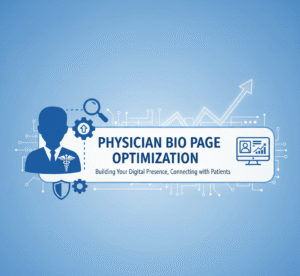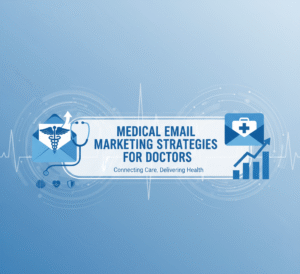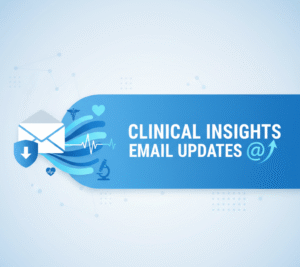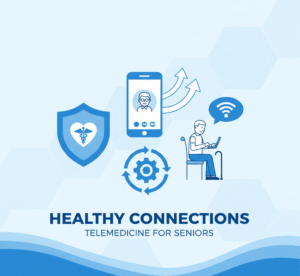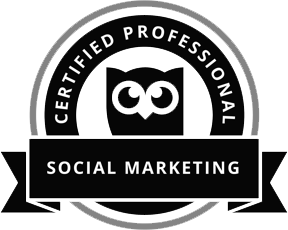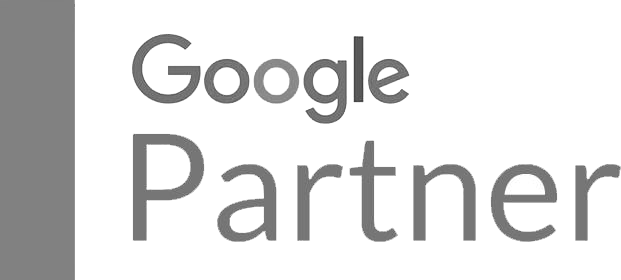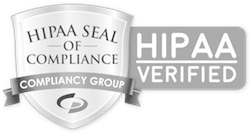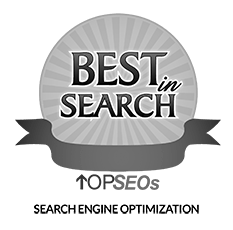“Looking for the best digital channels for B2B medical equipment marketing? Discover top strategies for surgical equipment lead gen, hospital procurement SEO, and reaching key buyers.”
The healthcare industry stands as a cornerstone of global well-being, perpetually evolving with groundbreaking innovations in medical technology. For B2B medical equipment suppliers, the challenge isn’t just developing cutting-edge devices but effectively connecting with the right decision-makers—hospital procurement teams, healthcare administrators, and specialized clinicians. In an increasingly digital world, traditional sales approaches often fall short. Modern success hinges on a sophisticated understanding and execution of digital marketing strategies. This article dives deep into the most effective digital channels for B2B medical equipment marketing, offering actionable insights for surgical equipment lead generation, hospital procurement SEO, and robust B2B medical device advertising. We’ll explore how to reach these critical audiences, drive quality leads, and ultimately enhance your return on investment.
The Unique Landscape of B2B Medical Marketing
Before dissecting specific channels, it’s vital to acknowledge the unique complexities inherent in B2B medical equipment marketing. This isn’t selling a consumer product; it’s about providing essential tools that impact patient outcomes and healthcare efficiency. This sector is heavily regulated, demands scientific accuracy, and operates on trust built through consistent, credible information.
When marketing medical devices, every claim must be substantiated with clinical evidence. Transparency about clinical trial outcomes, safety data, and product efficacy is not just good practice; it’s a regulatory imperative. Procurement teams and hospital buyers are not impulsive purchasers. They conduct extensive research, consult medical professionals, and evaluate long-term value, reliability, and support. Your digital strategy must reflect this rigorous decision-making process, positioning your company as a reliable, knowledgeable partner rather than just a vendor.
Understanding your target audience is paramount. Are you speaking to a surgeon focused on ergonomic design and precision, a hospital administrator concerned with cost-efficiency and integration, or a procurement specialist prioritizing regulatory compliance and supply chain reliability? Tailoring your messaging to these distinct needs is fundamental.
Building Your Digital Foundation: The Indispensable Website
Think of your website as the central hub of your digital marketing universe. It’s more than just an online brochure; it’s your 24/7 sales representative, information repository, and lead generation engine. A robust, professional website is the non-negotiable first step in B2B medical equipment marketing.
Your website must offer comprehensive information. This means detailed product specifications, clinical evidence, case studies, whitepapers, and clear descriptions of your solutions. It should also be user-friendly, ensuring easy navigation for busy healthcare professionals. Mobile optimization is no longer optional; busy doctors and administrators often access information on the go. Critically, your website needs clear calls to action (CTAs)—whether requesting a demo, downloading a spec sheet, or contacting sales.
Furthermore, your website needs to be a source of trust. This involves presenting your regulatory compliance, certifications, and quality standards. Testimonials from respected medical professionals or institutions can significantly bolster your credibility. High-quality visuals, including product videos and detailed images, help convey the precision and functionality of your equipment. For instance, detailed equipment spec sheets and marketing efforts often lead directly to website downloads, making them a crucial conversion point.
Beyond static content, consider interactive elements. A well-designed product configurator or a resource library with downloadable guides can significantly enhance user engagement and provide valuable insights into visitor interests. This digital storefront, meticulously crafted, lays the groundwork for all subsequent digital marketing endeavors.
Digital Channels for Impactful B2B Medical Equipment Marketing
With a strong website in place, let’s explore the primary digital channels that drive success for B2B medical equipment suppliers. Each channel plays a distinct role, but their combined synergy delivers the most potent results.
1. LinkedIn: The Professional Nexus for Medical Suppliers
LinkedIn stands out as an unparalleled platform for B2B medical equipment marketing. It’s where healthcare professionals, hospital administrators, and procurement specialists gather, network, and seek industry insights. Your med supplier LinkedIn outreach strategy should be multifaceted, leveraging organic engagement and targeted advertising.
Organic LinkedIn Presence: Begin by optimizing your company page. Ensure it’s complete, professional, and regularly updated with relevant content. Share company news, industry insights, and thought leadership articles. Encourage employees to optimize their personal LinkedIn profiles, positioning them as experts in the field. Employee advocacy can significantly extend your reach and credibility.
Engage with relevant industry groups. Participate in discussions, answer questions, and offer valuable perspectives without overt self-promotion. This positions your brand as a helpful, knowledgeable entity within the healthcare community. Share case studies and success stories, always focusing on the benefits and results for healthcare providers. For instance, a post detailing how a new surgical tool reduced procedure time or improved patient recovery can be highly impactful.
Targeted LinkedIn Advertising: LinkedIn’s targeting capabilities are precise, allowing you to reach specific job titles, industries, company sizes, and seniorities. This is invaluable for surgical equipment lead generation. You can target:
- Hospital executives and administrators
- Procurement managers
- Specific medical specialists (e.g., orthopedic surgeons, cardiologists)
- Professionals at competing companies or key healthcare institutions
Utilize various ad formats:
- Sponsored Content: Promote your whitepapers, webinars, and blog posts directly in the LinkedIn feed. These should be informative and provide value before asking for a conversion.
- Message Ads (formerly InMail): Deliver personalized messages directly to the inboxes of your target audience. These are powerful for direct B2B equipment email nurture, but must be crafted carefully to avoid being perceived as spam. Offer exclusive content or an invitation to a relevant event.
- Text & Dynamic Ads: Increase brand visibility and drive traffic to your supplier landing page messaging.
Remember, the goal on LinkedIn is to build professional relationships and establish trust. Your content should educate, inform, and solve problems for your audience, positioning your brand as a go-to resource in the medical equipment space.
2. Search Engine Optimization (SEO) & Search Engine Marketing (SEM): Being Found When It Matters Most
When a hospital procurement team needs specific equipment, where do they begin their search? Increasingly, it’s on Google or other search engines. This makes hospital procurement SEO and industrial medical catalog SEO critical.
Search Engine Optimization (SEO): SEO is about optimizing your website to rank higher in organic search results, ensuring that when potential buyers search for “advanced surgical microscopes” or “MRI compatible ventilators,” your site appears prominently. Effective SEO for B2B medical equipment marketing involves:
- Keyword Research: This is the bedrock of SEO. Identify the exact terms and phrases your target audience uses. Beyond broad terms like “medical equipment,” consider long-tail keywords such as “minimally invasive surgical instruments for gastroenterology” or “portable diagnostic ultrasound systems.” Include your other keywords like “B2B medical equipment marketing,” “surgical equipment lead gen,” and “equipment spec sheets marketing.”
- On-Page SEO: Optimize your website’s content, meta descriptions, title tags, and image alt text with these keywords. Ensure your content directly answers common questions and addresses the pain points of procurement teams and hospital buyers. Your supplier landing page messaging should be rich with relevant keywords while remaining natural and readable.
- Technical SEO involves optimizing your website’s technical aspects for search engines. Ensure fast loading speeds, mobile friendliness, a secure HTTPS connection, and a clear site structure. Broken links or poor navigation can hinder your rankings.
- Content Marketing: High-quality, informative content is a significant SEO driver. Regular blog posts, whitepapers, research papers, and detailed product guides signal authority and relevance to search engines.
- Backlink Building: Earn high-quality backlinks from reputable healthcare websites, industry associations, and medical publications. These act as votes of confidence, significantly boosting your domain authority and search rankings.
Search Engine Marketing (SEM) / Paid Search: While SEO is a long-term strategy, SEM, primarily through Google Ads, offers immediate visibility. B2B medical device ads allow you to bid on keywords and display your ads at the top of search results.
- Targeted Keywords: Bid on the high-intent keywords identified during your SEO research. These terms indicate that a buyer is actively looking for a solution.
- Ad Copy Optimization: Craft compelling ad copy highlighting your unique selling propositions, certifications, and benefits for healthcare institutions. Include clear CTAs.
- Landing Page Experience: Direct ad traffic to highly relevant, optimized supplier landing pages that continue the message from the ad and provide immediate value.
- Geotargeting: If your sales efforts are regional, use geotargeting to focus your ads on specific geographic areas or even individual hospital systems.
- Remarketing: Target users who have previously visited your website but didn’t convert, keeping your brand top-of-mind as they continue their research.
The synergy between SEO and SEM is powerful. While SEO builds long-term organic authority, SEM provides immediate traffic and lead generation, allowing you to capture demand as it arises.
3. Content Marketing: Becoming an Authority in Healthcare
Content is the fuel that powers your digital marketing engine. For B2B medical equipment suppliers, content marketing isn’t just about selling products; it’s about establishing your brand as a trusted authority, educating your audience, and solving their challenges. This is crucial for healthcare distributor content strategies.
Types of Content:
- Blog Posts: Regular blog posts addressing industry trends, common challenges, regulatory updates, and the applications of your equipment. Examples could include “Innovations in Robotic Surgery,” “Choosing the Right Sterilization Equipment,” or “Navigating Medical Device Procurement.”
- Whitepapers & Ebooks: In-depth, research-backed pieces that delve into complex topics. These excellent lead magnets provide valuable information in exchange for contact details. A whitepaper on “The Economic Benefits of Advanced Imaging Technology” could attract hospital CFOs.
- Case Studies: Detailed accounts of how your equipment has helped specific healthcare institutions achieve measurable results. Focus on problem-solution-outcome narratives. These are powerful for building trust and demonstrating ROI.
- Webinars & Videos: Explain complex devices, offer educational insights, or host expert panels. Video content is highly engaging and can simplify intricate technical details. Product demonstration videos are particularly effective.
- Infographics: Visually appealing summaries of data, statistics, or complex processes related to your equipment or the healthcare industry.
- Equipment Spec Sheets Marketing Materials: While technical, these must be presented on your website in an accessible, downloadable format. They often serve as a final step before a purchase decision.
- Trade Publication Campaigns: Consider contributing articles to reputable online trade publications in the medical field. This will expand your reach and reinforce your expertise.
Content Strategy for Procurement Teams and Hospital Buyers: Your content should address the entire buyer journey. Early-stage content might be educational, focusing on industry problems. Mid-stage content could introduce your solutions as viable options, supported by clinical evidence. Late-stage content provides the detailed information necessary for a purchase decision, such as pricing guides, implementation processes, and comprehensive equipment spec sheets.
Crucially, avoid sales pitches in your initial content. Focus on providing non-branded, helpful information. This builds trust and positions your brand as a valuable resource. Consistency in content creation and distribution is key to maintaining audience engagement and improving your hospital procurement SEO.
4. Email Marketing: Nurturing Leads and Building Relationships
Email remains one of the most effective channels for nurturing B2B equipment emails, nurturing leads, and building relationships. It allows for direct, personalized communication with potential and existing clients.
Building Your Email List:
- Website Forms: Use forms on your website for whitepaper downloads, webinar registrations, newsletter sign-ups, and demo requests.
- Content Upgrades: Include exclusive content (e.g., a checklist, template, or additional research) within your blog posts in exchange for an email address.
- Trade Shows & Events: Collect emails from attendees at industry events (with their permission).
Email Campaign Types:
- Welcome Series: Automated emails for new subscribers, introducing your company, its mission, and what they can expect from your emails.
- Lead Nurturing Sequences: Designed to move leads down the sales funnel. These sequences deliver targeted content based on a lead’s interests and engagement, slowly introducing your solutions. For example, a series might start with an industry trend article, move to a case study, and then offer a product demo.
- Product Updates & Announcements: Inform existing customers and interested prospects about new equipment releases, software updates, or expanded service offerings.
- Educational Newsletters: Regular newsletters featuring your latest blog posts, industry news, and valuable insights, positioning your brand as a thought leader.
- Promotional Emails: These should be used sparingly for special offers, event invitations, or direct calls to action like “Request a Quote.”
- B2B Equipment Email Nurture: Segment your email lists based on factors like job title, interest in specific product categories, or stage in the buying cycle. This allows for highly personalized messaging that resonates with the recipient’s needs. For example, a procurement manager might receive emails on ROI and maintenance, while a clinician might receive content on clinical applications and patient benefits.
Best Practices for Email Marketing:
- Personalization: Address recipients by name and segment your lists for highly relevant content.
- Clear CTAs: Every email should have a clear call to action.
- Mobile Responsiveness: Ensure your emails look good and are easily read on any device.
- Subject Lines: Craft compelling subject lines that encourage opens.
- A/B Testing: Test different subject lines, content, and CTAs to optimize your campaigns.
- Compliance: When collecting and using email addresses, adhere to all data privacy regulations (e.g., GDPR, HIPAA)
Email marketing is a powerful tool for maintaining ongoing communication, building long-term relationships, and guiding prospects through the complex B2B medical sales cycle.
5. Targeted Advertising (Beyond Search & LinkedIn): Expanding Your Reach
While LinkedIn and search ads are foundational, other targeted advertising channels can complement your B2B medical equipment marketing efforts.
- Programmatic Advertising: Leverage data and algorithms to automatically purchase ad space across a vast network of websites and apps. This allows for exact targeting based on demographics, interests, and browsing behavior. You can reach healthcare professionals by visiting industry-specific websites or medical news portals.
- Retargeting/Remarketing: Display ads to users who have previously interacted with your website or social media profiles. This keeps your brand top-of-mind and encourages them to return and complete a desired action, like downloading a brochure or requesting a demo.
- Trade Publication Campaigns (Digital): Many medical trade publications offer digital advertising opportunities, including banner ads, sponsored content, and email sponsorships. These allow you to reach a highly engaged, specialized audience already interested in medical equipment. For instance, placing an ad in an online journal for hospital administrators can be incredibly effective.
- Display Advertising Networks: Utilize Google Display Network or other ad networks to show visual ads across millions of websites. While broader than LinkedIn, you can still apply robust targeting criteria based on website content, audience interests, and even specific placements on medical-related sites.
The key to successful B2B medical device ads across these channels is precision targeting and compelling creative. Your ads should immediately convey value and speak to the specific needs of your audience.
Measuring Success: KPIs for B2B Medical Equipment Marketing
Consistent measurement and analysis are crucial to ensure your digital marketing efforts yield results. Key Performance Indicators (KPIs) for B2B medical equipment marketing include:
- Website Traffic: Monitor unique visitors, page views, and time on site.
- Lead Generation: Track the qualified leads generated through forms, calls, and email inquiries.
- Conversion Rates: Measure the percentage of visitors completing a desired action (e.g., downloading content, requesting a demo).
- Sales Qualified Leads (SQLs): Track how many leads are ready for sales outreach.
- Cost Per Lead (CPL): Understand the efficiency of your lead generation efforts across different channels.
- Customer Acquisition Cost (CAC): The total cost of acquiring a new customer.
- Return on Investment (ROI): Crucially, measure the revenue generated against your marketing spend.
- Engagement Metrics: For social media and content, track likes, shares, comments, and content downloads.
- Search Rankings: Monitor your position in search engine results for key terms.
Review these metrics regularly to identify what’s working, what needs adjustment, and where to allocate resources for maximum impact. Data-driven decisions are fundamental to optimizing your digital marketing strategy.
Partnering for Success: The Invigo Media Advantage
Navigating the intricate world of B2B medical equipment marketing demands specialized expertise. The regulatory landscape, the complex buyer journey, and the highly technical nature of the products require a nuanced approach that many general marketing agencies simply cannot provide. This is where Invigo Media’s B2B marketing solutions come into play.
Invigo Media specializes in digital marketing for the B2B sector and has a deep understanding of the healthcare industry’s unique demands. Their expertise in digital marketing, especially SEO, can significantly drive quality leads and improve ROI for medical equipment suppliers. They understand the nuances of targeting procurement teams and hospital buyers, ensuring your message reaches the right individuals at the right time.
Invigo Media’s solutions are designed to:
- Develop Comprehensive Strategies: From initial market research and audience identification to channel selection and content creation, they craft tailored strategies that align with your business objectives.
- Optimize for Lead Generation: Their focus is squarely on generating high-quality leads that translate into sales opportunities. This includes refining your surgical equipment lead gen processes, optimizing supplier landing page messaging, and implementing effective B2B email nurture campaigns.
- Enhance Search Visibility: With a strong emphasis on hospital procurement SEO and industrial medical catalog SEO, Invigo Media ensures your products and solutions are discoverable by the buyers actively searching for them.
- Craft Compelling Content: They understand how to create healthcare distributor content that resonates with medical professionals and procurement specialists, balancing technical accuracy with persuasive communication.
- Execute Targeted Campaigns: Whether precision-focused med supplier LinkedIn outreach or impactful B2B medical device ads across various platforms, Invigo Media employs sophisticated targeting to maximize reach and engagement.
- Measure and Optimize: They refine campaigns through continuous monitoring and data analysis to ensure optimal performance and a clear return on your marketing investment.
By partnering with an agency like Invigo Media, B2B medical equipment suppliers can leverage specialized knowledge to navigate the digital landscape, overcome marketing challenges, and achieve sustainable growth in a highly competitive market. Their ability to translate complex product features into compelling narratives, while adhering to industry regulations, makes them an invaluable asset in driving your marketing success.
Conclusion: Charting Your Digital Path to Growth
For B2B medical equipment suppliers, the digital realm offers unprecedented opportunities for growth, market penetration, and establishing lasting relationships with key healthcare stakeholders. Success is not simply having an online presence, but executing a deliberate, data-driven strategy across the most impactful digital channels.
Each element plays a critical role, from building a robust, informative website to mastering the professional networking power of LinkedIn, optimizing for search visibility, creating compelling content, and nurturing leads through personalized email campaigns. Complementing these with targeted advertising ensures your brand stays front and center for decision-makers.
The journey requires a deep understanding of your audience, a commitment to providing credible, valuable information, and an unwavering focus on measurable results. By embracing these digital strategies and partnering with experts like Invigo Media, B2B medical equipment suppliers can drive quality leads, improve ROI, and solidify their position as indispensable partners in advancing global healthcare. The digital frontier is not just a place for marketing; it’s a vital pathway to innovation, connection, and profound impact within the medical industry.
FAQs about B2B Medical Equipment Marketing
Q1: What is B2B medical equipment marketing?
B2B medical equipment marketing involves promoting medical devices, instruments, and related services to businesses and organizations within the healthcare sector. This includes hospitals, clinics, diagnostic centers, research institutions, and government health agencies. It focuses on lead generation, relationship building, and demonstrating how equipment improves patient care, operational efficiency, and financial outcomes for the buyer. It differs from B2C marketing due to longer sales cycles, multiple decision-makers, higher price points, regulatory complexities, and the need for clinical evidence and support.
Q2: Why is digital marketing crucial for B2B medical equipment suppliers?
Digital marketing is essential because modern procurement teams and healthcare buyers begin their research online. A strong digital presence ensures your company is discoverable, credible, and capable of providing the detailed information these buyers require. It allows for precise targeting of specific roles (e.g., surgeons, procurement managers), efficient lead generation, and the ability to track ROI more accurately than traditional methods. It also enables continuous communication and relationship building through content and email nurturing.
Q3: Which digital channels are most effective for B2B medical equipment suppliers?
The most effective digital channels include:
- A professional, optimized Website Serves as the central information hub.
- LinkedIn: For professional networking, content sharing, and targeted advertising to healthcare professionals and decision-makers.
- Search Engine Optimization (SEO) & Search Engine Marketing (SEM): To ensure visibility when buyers search for specific equipment or solutions.
- Content Marketing: Creating valuable, informative resources (blogs, whitepapers, case studies, videos) to establish authority and educate the market.
- Email Marketing: For lead nurturing, product updates, and personalized communication with prospects and customers.
- Targeted Advertising: Besides LinkedIn and search, this includes programmatic ads, retargeting, and digital ads in trade publications.
Q4: How can I reach hospital procurement teams and hospital buyers specifically?
To reach hospital procurement teams and buyers, focus on channels that allow for precise targeting and content that addresses their unique concerns.
- LinkedIn: Use advanced targeting options by job title (e.g., “Procurement Manager,” “Hospital Administrator,” “Director of Supply Chain”).
- SEO: Optimize for keywords they use when researching equipment, focusing on ROI, long-term costs, maintenance, and compliance.
- Content Marketing: Create whitepapers, case studies, and webinars highlighting cost savings, operational efficiency, regulatory compliance, and staff training support.
- Email Marketing: Segment your lists to send tailored content focusing on your equipment’s business and administrative benefits.
- Trade Publications: Advertise or contribute articles to online journals that hospital administrators and procurement specialists read.
Q5: What kind of content resonates with B2B medical equipment buyers?
Content that resonates with B2B medical equipment buyers is typically:
- Evidence-Based: Supported by clinical studies, research, and factual data.
- Problem-Solving: Addresses common challenges healthcare facilities face and how your equipment provides solutions.
- Informative & Educational: Provides deep insights into industry trends, technological advancements, and best practices.
- ROI-Focused: Highlights financial benefits, cost-effectiveness, and long-term value.
- Compliant: Reassures buyers about regulatory adherence and safety standards.
- Specific: Includes detailed equipment spec sheets, technical specifications, and implementation guides.
- Success Stories: Case studies demonstrating real-world results achieved by other healthcare organizations.
Q6: How important is regulatory compliance in medical equipment marketing?
Regulatory compliance is essential. The healthcare industry, including Bodies like the FDA, is heavily regulated in Europe. Marketing claims must be accurate and substantiated and avoid misrepresentation. Adhering to data privacy laws (like HIPAA or GDPR) is also critical, especially when collecting and managing lead data. Failing to comply can result in severe legal penalties, reputational damage, and loss of trust from potential clients. Your marketing materials should convey your commitment to quality and compliance.
Q7: What are the common pitfalls to avoid in B2B medical equipment marketing?
Common pitfalls include:
- Overtly Salesy Content: Focusing solely on product features without addressing buyer needs or providing value.
- Ignoring Regulatory Compliance: Making unsubstantiated claims or mishandling sensitive data.
- Lack of Target Audience Understanding: Using generic messaging that doesn’t resonate with specific roles (e.g., clinician vs. administrator).
- Poor Website Experience: A slow, unoptimized, or difficult-to-navigate website.
- Inconsistent Messaging: Brand voice and value proposition differ across channels.
- Neglecting Lead Nurturing: Failing to follow up with leads or provide ongoing, valuable content.
- Not Measuring ROI: Investing in channels without tracking their effectiveness, leading to wasted spend.
- Using AI-sounding language: Relying on generic, buzzword-heavy phrases rather than human, empathetic, and expert language.
Q8: How can a digital marketing agency like Invigo Media help?
A specialized digital marketing agency like Invigo Media brings expertise in navigating the complexities of B2B healthcare marketing. They can:
- Develop tailored strategies for your specific products and target markets.
- Execute effective campaigns across all relevant digital channels (SEO, LinkedIn, email, content, paid ads).
- Ensure regulatory compliance in all marketing efforts.
- Create high-quality, conversion-focused content.
- Provide advanced analytics and reporting to track ROI.
- Optimize campaigns continuously for better performance and lead quality.
- Free up your internal team to focus on core business operations while experts handle your marketing.
Q9: What’s the role of trade publications in digital marketing for medical equipment?
Trade publications, both online and print, remain highly influential in the medical equipment sector. Digitally, they offer:
- Targeted Audience: Readers are already engaged in the healthcare industry and actively seeking relevant information.
- Credibility: Association with a reputable publication enhances your brand’s authority.
- Advertising Opportunities: Banner ads, sponsored content, and email sponsorships can reach a highly specialized and receptive audience.
- Thought Leadership: Contributing expert articles can position your company as an industry leader. They serve as an effective channel to extend your reach beyond your owned properties and tap into established professional communities.


